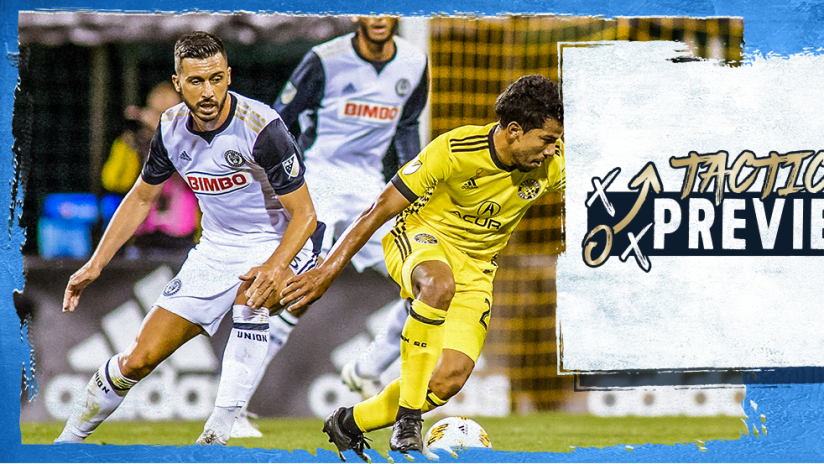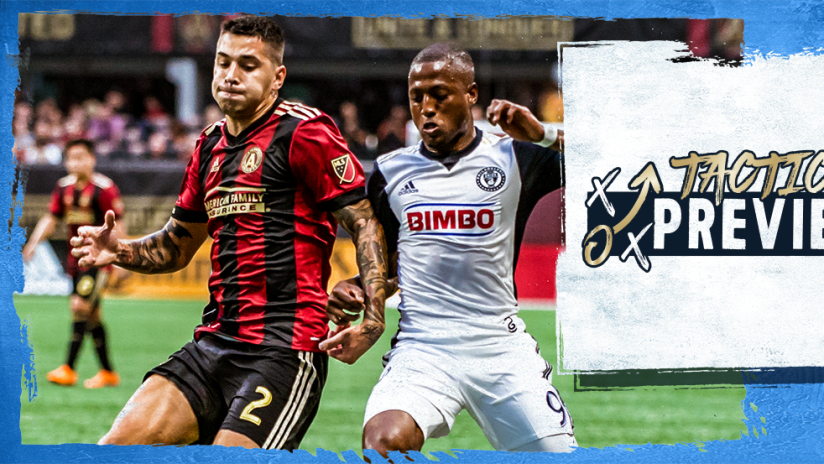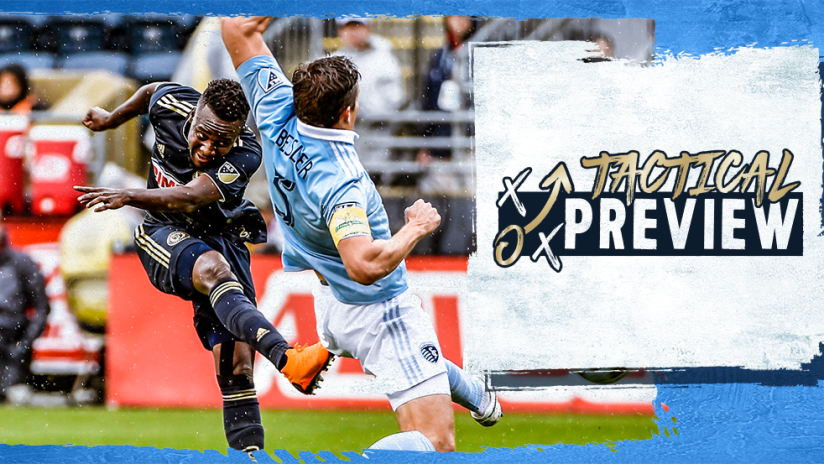Orlando City is not afraid to splash their cash. After helping to pry open the door to megadeals using allocation money with their acquisition of Dom Dwyer, the Purple Lions kept adding to their attack this offseason by swooping for proven MLS veterans Sacha Kljestan and Justin Meram. Josue Colman was brought in as a Designated Player to grow into a goalscoring creator to help Kljestan, and Yoshimar Yotun arrived to provide two-way play in midfield.
In short, the post-Kaka plan in Orlando was to spread Kaka’s influence across several proven pieces and a few new faces with high upside.
But perhaps you’ve noticed a theme to these new players (and no, it’s not that they are mostly great names to use for MLS Scrabble.)
Orlando forgot about defense. Sure, they signed goalie Joe Bendik to an extension, brought in Mohamed El-Munir, Lamine Sane, Amro Tarek, Chris Schuler, and RJ Allen, and acquired Oriol Rosell to sit in front of the back line… but if those are the players that are supposed to make your defense better, how bad was it before?
The answer is bad, and it has remained underwhelming in 2018. Orlando, like LA Galaxy, who arrive in Philly this Saturday, are a top-heavy team that spent big to be that way; they are the evidence that spending money like Atlanta is less important than spending money intelligently like Atlanta.
The Basics
Who. Orlando City SC
When. Wednesday, July 18 at 7:00PM EST
Where. Talen Energy Stadium
Watch. PhiladelphiaUnion.com
The Stakes
A berth in the US Open Cup semifinals against the winner of Chicago Fire vs USL side Louisville City.

Form
Orlando City finally broke a nine match MLS winless streak with a 2-1 victory over Toronto FC last Saturday. The win came in new head coach James O’Connor’s second match in charge, and it showcased some new tactical wrinkles while previewing how the Lions will look to approach games under their former player.
One notable takeaway from Saturday’s match is that O’Connor wants his team to run, and keep running. Orlando smothered Toronto for 50 minutes, and when they ran out of gas they sat back and survived a number of surprising misses from Giovinco. With that in mind, it will be interesting to see whether O’Connor stick with a player like Sacha Kljestan on short rest.
Rewind
Orlando beat the Union in April during a manic six match winning streak. There was a different man in charge of the Lions back then, so little can be gleaned by looking back.
Big Picture
O’Connor’s Louisville City squads played a three-back system with wingbacks that zoomed endlessly up and down the flanks and two holding midfielders protecting the center of the field. This shape gave them the ability to play through the center using numerical superiority or ping balls out to the wings with the center backs.
Even if Orlando City’s central defense was fully healthy — which it is not — the personnel do not appear to be in place to pull off the same kind of shape right now.
The coach seemed to recognize this when he put out a hybrid, shape-shifting formation against Toronto that sought to dominate the left side of the pitch with the ball and control the center without it. Additionally, OCSC pressed with venom to keep the ball on their preferred side of the pitch. The result was a lopsided match in which Toronto struggled to progress the ball and Orlando snapped off a ton of shots, seven inside the box.
Within Orlando’s system, there were a few intriguing roles. First, Tony Rocha started in place of Oriol Rosell and played a hybrid attacking/holding role depending on whether his side had possession. When Orlando held the ball, Rocha stepped ahead of Yotun and Will Johnson to form a midfield triangle that helped draw players away from Sacha Kljestan, who operated in a narrow role off the left wing. Below, you can see Rocha start fairly deep, roll forward into midfield, press the ball to keep it on the left, then rotate back to his defensive positioning on the right side of the midfield.
When the Lions lost possession, Rocha quickly formed that midfield trio with Johnson and Rosell, often covering defensively all the way to the right touchline so the right winger, Chris Mueller, could come narrow defensively and help prevent Michael Bradley from finding space. These defensive movements successfully limited Toronto’s ability to switch fields and open the left channel for Jonathan Osorio, who has been such a dangerous presence there this season.
As these complex patterns developed, the other two midfielders, Yotun and Johnson, looked to step quickly and press the ball. Orlando’s counterpress was manically energetic but not without organization. TFC’s backwards passes were pressed hard, and they rarely built out of the back with any rhythm.
Toronto did find success by beating Rocha’s movement with lifted balls over Mueller’s head to the wing. If the pass beat Rocha to the spot, TFC could create numbers on their left, and Orlando’s deep defending was suspect, leaving lanes into the central area above the box where Giovinco lurked.
In attack, Orlando looked for Yotun early and often.
Will Johnson would pull defenders away from the Peruvian when possible, but could also drift over to add an extra man to the buildup if Orlando needed to create a numerical advantage on the left. The goal was always to find Yotun space in front of the defense, and the midfielder would look to play vertical balls cutting through the defensive lines to Kljestan or loop long diagonals to Mueller, who stayed very wide when OCSC had possession.
Once Mueller or Kljestan had the ball, Orlando looked to get behind the defensive line as quickly as possible, with early throughballs and crosses that forced defenders to be aware in retreat.
Big battles
Orlando counterpress vs Union transition attack. Philadelphia wants to look forward as quickly as possible after winning turnovers, and the whole point of a counterpress is to snuff out the availability of that first option. Without much fanfare, the Union’s quick passing in tight spaces has dramatically improved this season, and they’ll need that part of the offense to be effective against the part of Orlando’s game that O’Connor has clearly decided must change immediately.
Union front three vs Orlando back four. This is a broad one, but that’s because winning any of these battles should allow the Union to win the overall war. If Philly can involve their wings quickly after winning the ball back, they will be able to run at a defense that cannot stand up to 1v1 scrutiny. Especially on the left, where El-Munir is asked to get forward and track back to defend, dominating the 1v1 on the edge will tilt the match firmly in the Union’s favor. In the center, the OCSC center backs do not do well in space, so if the Union can pass around the initial pressure they’ll feel, they will have Borek Dockal and a striker in the gap between Orlando’s midfield and defense. The confidence to turn and run at the center backs will collapse the back line, allowing for balls to be pushed wide then crossed low and hard behind a retreating defense.
Dom Dwyer vs McTrusty
Dwyer went 86 minutes on Saturday, but he’s carrying the Lions scoring load right now and is likely
to start on Wednesday. The English-born American is a darting mover who has played in a Josef Martinez role under O’Connor. Dwyer dances along the defensive line, pulling off back shoulders, dropping in a few yards then flitting off diagonally if he can pull a defender forward. Although he has barely touched the ball in the past two matches, Dwyer made the MLS Team of the Week after scoring a fine solo goal in which Toronto’s defense turned into the clock and candlestick from Beauty and the Beast and invited the Orlando striker to be their guest.
Big questions
What is Orlando? That is, will James O’Connor stick with the 4-2-3-1ish shape that won on Saturday or will he try to implement a three-back set like in Louisville? Within either of those systems, how will the new head coach try to manage the minutes of his older charges like Kljestan on short rest? Josue Colman was on the bench Saturday, but the talented attacker could be a game changer in the right system.
Can the Union get on top early? Philly is now 6-0-0 in MLS when scoring first, and with Orlando in transition, a strong start could allow the Union to take control of the match and never give it back. In O’Connor’s first two games in charge, the Lions have not held possession for long periods of time. If the Union score and move the ball well, they will wear out their opponents quickly.
Will David Accam build momentum? The highly talented winger finally notched his first MLS goal last Wednesday night, and with Ilsinho likely to need more recovery time Accam could be in line for a start against Orlando City. The directness of Accam’s game fits the profile Philly wants in a winger, and it’s the confidence and defensive awareness that have been the biggest hindrances to Accam’s development this season. Those issues have led to the overthinking that can make the difference between putting oneself in a good position to score and hesitating. It’s perhaps not surprising that Accam’s goal against Chicago came when he didn’t have time to consider his options and just let his talent do the work.
One thing is for sure: A newly confident Accam providing goals off the wing would be a huge boost for the Union down the home stretch of the season.














